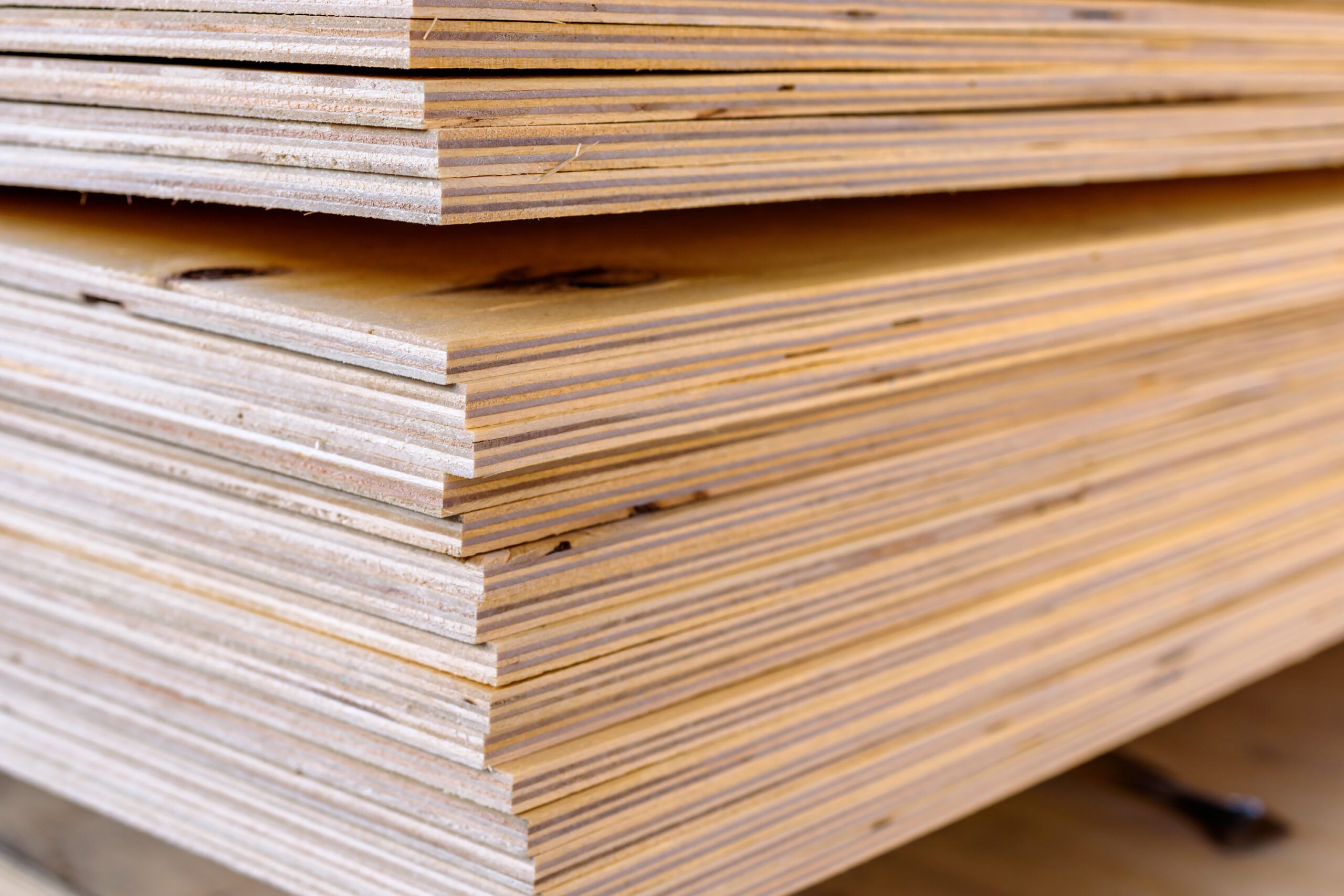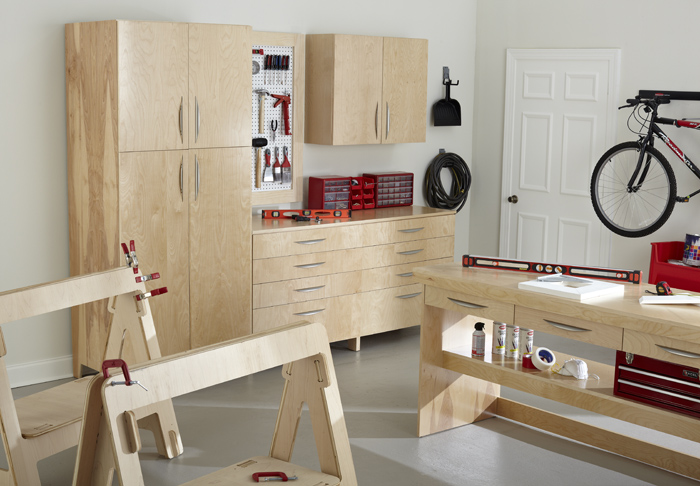When it comes to working in the workshop, choosing the right plywood is essential. But with so many options available, it can be overwhelming to figure out which one to use, right? Well, don’t worry! I’ve got you covered. In this article, we’ll dig into the question of “which plywood do we use in the workshop?” and provide you with some helpful insights.
Now, you might be wondering why plywood matters in the first place. Great question! Plywood is a versatile material that’s widely used in woodworking projects. Whether you’re building furniture, cabinets, or shelves, using the right plywood can make a significant difference in the quality and durability of your end product.
So, let’s dive in and explore the different types of plywood you can use in your workshop, taking into account factors such as strength, durability, and cost. By the end of this article, you’ll have a clearer understanding of which plywood is best suited for your specific woodworking needs. Let’s get started!
Choosing the right plywood for your workshop is crucial for a successful project. Consider factors like wood grain, durability, and thickness. Look for plywood made with hardwood veneers to ensure strength and stability. Opt for plywood with a smooth finish to minimize sanding. Additionally, select a type of plywood that is suitable for your specific woodworking needs, such as exterior-grade plywood for outdoor projects. With the right plywood, you’ll achieve professional results in your workshop.

Which Plywood Do We Use in the Workshop?
Plywood is a versatile material used in various woodworking projects, including those in the workshop. Choosing the right plywood can significantly impact the quality and durability of your finished product. In this article, we will explore different types of plywood commonly used in workshops, their characteristics, and the factors to consider when selecting the ideal plywood for your project.
1. Marine-grade Plywood
Marine-grade plywood is a top choice for workshops where moisture resistance is a high priority. It is highly durable, made with waterproof glue, and can withstand exposure to water, making it suitable for outdoor furniture or workshop projects where humidity is a concern. Marine-grade plywood is constructed with high-quality veneers and has no voids, ensuring a smooth and strong surface for your projects.
Additionally, marine-grade plywood is resistant to delamination, ensuring the layers remain bonded even in harsh conditions. Its strength and reliability make it a preferred choice for boat construction, but it is also a fantastic option for workshop projects that require durability and moisture resistance.
When using marine-grade plywood in the workshop, it’s important to consider its higher cost compared to other types of plywood. However, the benefits it offers in terms of longevity and resistance to moisture make it a worthwhile investment for projects that require superior performance.
2. Hardwood Plywood
Hardwood plywood is a popular choice for both furniture making and workshop projects. It is made from multiple layers of hardwood veneers, bonded with strong adhesives. The use of hardwood veneers enhances the plywood’s strength and durability, making it suitable for projects that require load-bearing capabilities.
Hardwood plywood comes in various grades, such as A, B, C, and D, indicating the quality of the veneer used on the front and back faces. Grade A signifies the highest quality, with minimal defects, while Grade D may have more visible imperfections. For most workshop applications, Grade B or C hardwood plywood is sufficient and more cost-effective.
One of the advantages of hardwood plywood is its attractive appearance. The natural wood grain enhances the aesthetic appeal of furniture pieces and gives workshop projects a professional finish. It also provides excellent stability and resistance to warping, making it a reliable choice for long-lasting pieces.
3. Birch Plywood
Birch plywood is known for its high strength-to-weight ratio and smooth surface. It is made from birch veneers, which offer superior stability and resistance to warping. Birch plywood is often used in fine woodworking projects, cabinetry, and workshop applications that require precision and stability.
This type of plywood is available in different grades, such as B/BB, BB/BB, and BB/CP, among others. The grading indicates the quality of the front and back veneers, with B/BB being the highest quality and BB/CP being more economical but still suitable for most workshop needs.
Birch plywood is prized for its fine grain, which allows for smooth finishes and creates a visually appealing look. It is easy to work with and holds screws well, making it a versatile option for various workshop projects.
Choosing the Right Plywood for Your Workshop
When deciding which plywood to use in your workshop, consider the specific requirements of your project. Factors such as moisture resistance, load-bearing capacity, appearance, and cost should guide your decision-making process. It’s also essential to evaluate the project’s environmental conditions and select plywood that will withstand those conditions.
Key Considerations When Choosing Plywood
Before making a final decision, here are some key considerations to keep in mind:
1. Project Requirements
Assess the specific needs of your project. Determine the level of moisture resistance, thickness, and strength required for optimal performance.
2. Plywood Grade
Familiarize yourself with plywood grades to ensure you choose the right one for your needs. Higher grades often indicate superior quality and fewer imperfections but come at a higher cost.
3. Budget
Consider your budgetary constraints and balance them with the quality and features you require for your project. Keep in mind that higher-quality plywood may offer better long-term durability.
4. Environmental Considerations
Assess the workshop’s environmental conditions, such as humidity levels, and select plywood that will withstand those conditions effectively.
5. Supplier Reputation
Choose a reputable supplier that provides high-quality plywood. Read customer reviews and seek recommendations to ensure you are purchasing from a reliable source.
6. Sustainability
If eco-friendliness is important to you, consider plywood that is sourced from sustainable forests and certified by organizations such as the Forest Stewardship Council (FSC).
7. Safety
Ensure the plywood you choose meets safety standards, especially for projects where fire resistance or low emissions are significant concerns.
Conclusion
Choosing the right plywood for your workshop projects is crucial for ensuring excellent results. Whether you opt for marine-grade plywood or select hardwood or birch plywood, consider the specific requirements of your project, environmental conditions, and budget constraints. By evaluating these factors and following the key considerations discussed in this article, you can confidently choose plywood that will meet your needs and provide long-lasting quality in your workshop projects.
Key Takeaways: Which Plywood Do We Use in the Workshop?
- Plywood is commonly used in workshops due to its versatility.
- For general workshop projects, a standard plywood with a thickness of 3/4 inch is a good choice.
- For heavy-duty projects or those requiring more strength, marine-grade plywood is recommended.
- When working on projects that involve moisture exposure, consider using moisture-resistant plywood.
- It’s important to select a plywood grade that suits your specific needs and budget.
When selecting plywood for your workshop, choose based on the project requirements. Consider factors such as thickness, grade, and moisture resistance. By selecting the right plywood, you can ensure the durability and quality of your workshop projects.
Frequently Asked Questions
Welcome to our workshop! Here are some frequently asked questions about choosing plywood for your projects.
1. What are the different types of plywood I can use in a workshop?
There are several types of plywood that are commonly used in workshops. Some popular options include:
1. Softwood Plywood: This type of plywood is made from softwood trees like pine or cedar. It is a cost-effective option and is commonly used for projects that require strength and durability.
2. Hardwood Plywood: Hardwood plywood is made from hardwood trees and is known for its strength and resistance to moisture. It is often used for high-end furniture or cabinetry.
3. Marine Plywood: Marine plywood is specifically designed to withstand moisture and is commonly used in boat building and outdoor projects.
4. MDF (Medium-Density Fiberboard) Plywood: MDF plywood is made from wood fibers and resin, resulting in a smooth and uniform surface. It is often used for projects that require a smooth finish, such as cabinetry or furniture making.
2. How do I choose the right plywood for my workshop?
When choosing plywood for your workshop, there are a few factors to consider:
1. Purpose: Determine what type of project you are working on and what qualities the plywood needs to have, such as strength, moisture resistance, or smoothness.
2. Plywood Grade: Plywood is graded based on its quality and appearance. Grades range from A (highest quality) to D (lowest quality). Choose a grade that matches your project requirements and budget.
3. Thickness: Consider the thickness of the plywood based on the strength and stability needed for your project. Thicker plywood is generally stronger, but it may also be heavier and more expensive.
4. Cost: Take into account your budget and choose plywood that fits within your desired price range.
3. Can I use any plywood for outdoor projects in the workshop?
While some types of plywood, such as marine plywood or pressure-treated plywood, are suitable for outdoor use, not all plywood is designed to withstand moisture and weather conditions. If you are working on an outdoor project in your workshop, it’s best to choose plywood specifically designed for outdoor use. Marine plywood and exterior-grade plywood are good options for outdoor projects as they are more resistant to moisture and can withstand the elements better than standard plywood.
Be sure to also apply an appropriate finish or sealant to protect the plywood from moisture and UV damage.
4. How can I ensure the longevity of plywood used in my workshop?
To ensure the longevity of plywood used in your workshop, follow these tips:
1. Proper Storage: Store plywood in a cool, dry place to prevent warping or moisture damage.
2. Protection from Moisture: Avoid exposing plywood to excessive moisture. Use a moisture barrier or sealant to protect it in areas prone to water exposure.
3. Regular Maintenance: Regularly examine the plywood for signs of damage, such as rot or delamination. Make any necessary repairs or replacements promptly.
4. Avoid Excessive Weight: Don’t exceed the weight limit for the plywood. Be aware of the load-bearing capacity and use additional supports if necessary.
5. Can I use plywood for flooring in the workshop?
Plywood can be a suitable option for workshop flooring, especially if you are on a budget. However, it’s important to choose the right type of plywood for this purpose. Use thicker plywood panels with tongue-and-groove edges for increased stability and durability. Additionally, consider treating the plywood with a sealant or floor finish to protect it from wear and tear.
If you anticipate heavy loads or plan to use heavy machinery in your workshop, it’s advisable to consult a structural engineer or flooring specialist to ensure the plywood flooring will meet the necessary requirements.

Summary:
When it comes to choosing plywood for the workshop, there are a few key factors to consider. First, think about the type of project you’ll be working on and what kind of strength and durability you need. If you’re building furniture or cabinets, go for hardwood plywood. For lighter projects or temporary structures, softwood plywood is a good option. Lastly, don’t forget to check for any defects or damage before making your purchase, as this can affect the quality of the plywood.
Remember, plywood comes in different thicknesses, so choose the one that suits your needs. Keep in mind that plywood with more layers tends to be stronger. It’s also important to think about cost, as higher quality plywood usually comes at a higher price. By considering these factors, you’ll be able to choose the right plywood for your workshop and have successful projects every time.
